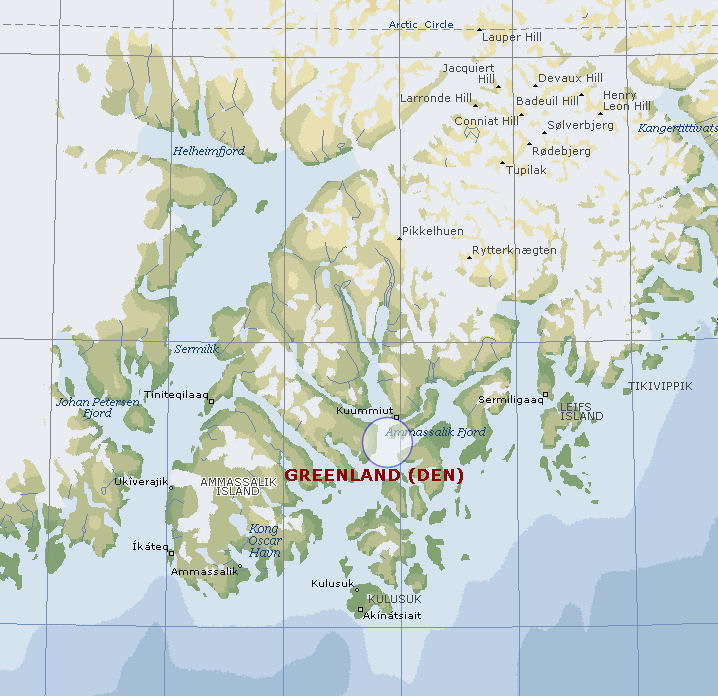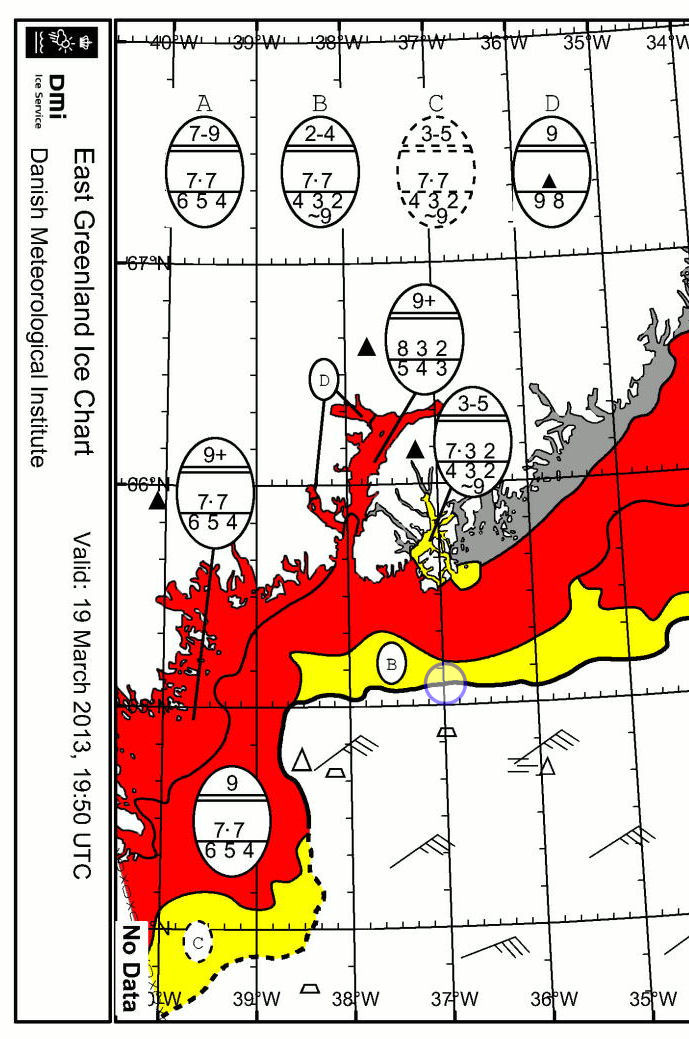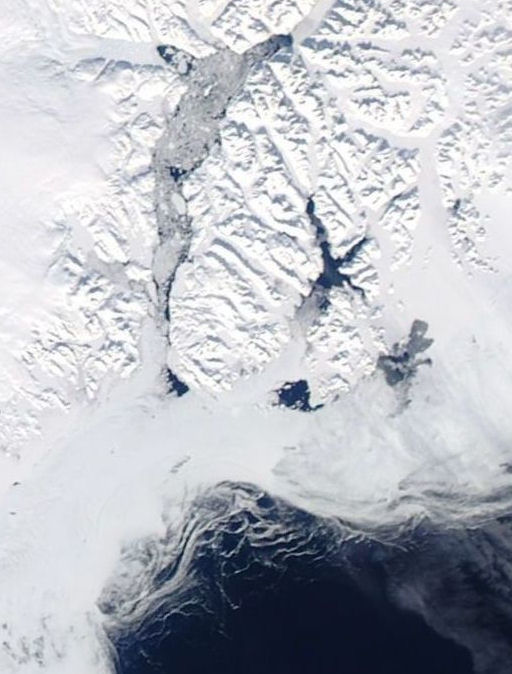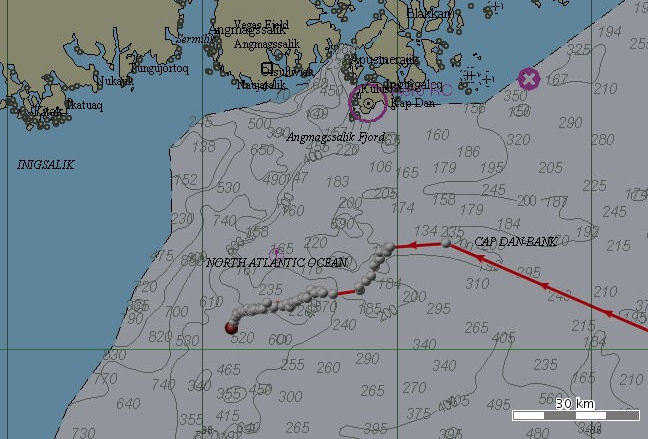
Shark tagged with Microwave Technology satellite pop-up tag started transmitting data as scheduled 6 months after deloyment:
One 330 cm long (TL) about Greenland shark with a body mass of approximately 250 kg, tagged 6 months ago in Ammassalik Fjord popped up last week and started to upload stored data concerning what depths and temperatures it had been swimming at for the entire period.

Area where the Greenland shark was released September 16.2013.
The tag should have released automatically on Friday March 15.th 2013, but we didn't get an alert from the Argos satellite and were worried that it would have popped under ice. One problem with sat pop-up tags is that they won't be able to trasmit through ice, and from Ice charts it was apparent that the fjord system and vicinity was ice covered. Hence we were worried that the tag had been lost.
On March 15. suddenly we got an alert that one tag had started to transmit data at a position approximately 32 nm south of Kulusk.

Ice chart March 19. 2013 - ring indicate intial info of tag position.
Apparently we were lucky that the tag was surfacing just outside heavy ice, and hence able to transmit. A signal from a second tag on a similar size shark has not been received yet.

Visual MODIS Satellite image of the area from March 19. 2013.

Image showing how the tag drifted with the predominant ocean current the first two days while trasmitting data concerning temperature and depth.
The tag is still transmitting data for the next few days, but also drifting closer to heavy ice. The result of the latter could be poor satellite transmission => no more transmission of data.
The satellite tag will run out of battery within a week and will be lost. The shark was also tagged with a Floy (or spagetti) tag, which will help us undetstand the distribution and growth rate of Greenland shark - if it is ever caught and reported.
Link to page describing the tags we use.
Link to YouTube video from the research cruise in September 2012- tagging a shark in foul weather.
This project is part of a larger effort to study the conservation biology of the Greenland in collaboration with Professor Peter G. Bushnell, University of Indiana South Bend; Dr. Rich Brill, Virginia Institute of Marine Research and Dr. Diego Bernal, University of Mass Dartmouth and others.
The project is financially supported by National Geographic Society, Save Our Seas Foundation, the Carlsberg Foundation, the Danish Centre for Marine Research, The Commission for Scientific Research in Greenland, TUNU-Mafig (Marine Fishes of North East Greenland).
This page: http://mbl.ku.dk/JFSteffensen/SharkTagPopUpMarch19
Updated January 2019